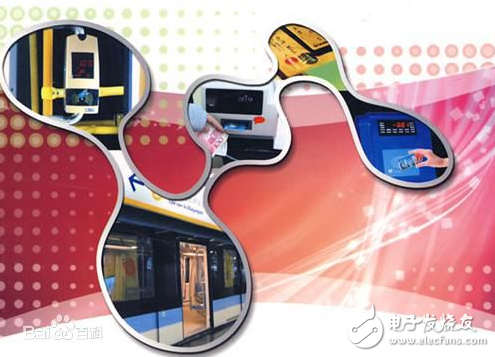In the past two years, there has been a summary of the trend of the technology industry: cloud computing, wisdom, namely cloud computing, Internet of Things, mobile Internet, big data, smart city. In 2016, Yunzhi moved to become a big cloud, namely big data, intelligence, mobile Internet, cloud computing. Whether it is the Internet of Things or a smart city, it is replaced by a new trend: intelligent.
A few years ago, although the development of the Internet of Things and smart cities was conceptually hot, the actual landing was far less optimistic. At its root, although the application of big data, cloud computing and mobile Internet has been very deep, but the lack of intelligence, smart cities, and the Internet of Things are hard to really spread.

The intelligentity mentioned here has the meaning of artificial intelligence, and also has the meaning of making all kinds of traditional equipment and terminals more intelligent. Once all the items become intelligent, their connection and data exchange become more smoothly. Therefore, from this perspective, the Internet of Things will still be in a state of gain in 2017.
This is not to say that the Internet of Things is no longer hot. On the contrary, both China and other countries in the world have realized the industrial opportunities brought about by the new round of development of the Internet of Things, and even regard it as a new round of economic and technological development in the world. A new impetus for development. The China Information and Communication Research Institute recently released the "IoT White Paper" and pointed out that the current global Internet of Things has entered a new wave of development driven by traditional industry upgrades and large-scale consumer markets. First, the intelligent upgrading of traditional industries such as industry/manufacturing has become an important opportunity for the innovation of the Internet of Things. Another huge driving force for development is the rise of the large-scale consumer market and the acceleration of the Internet of Things.
To a certain extent, some representative fields in the Internet of Things have begun to rise, such as consumer service robots, VR devices, smart wearable devices, etc., which are all in the category of the Internet of Things. From the perspective of the popularity of these industries, The Internet of Things has entered a stage of rapid development.
However, if the Internet of Things and the Internet are compared, if the Internet of Things is to achieve the same level of popularity as the Internet, it will obviously require a number of thresholds to be crossed.
Technical standards are a major obstacle. Compared with the TCP/IP protocol of the Internet, the connection technology of the Internet of Things can be divided into two categories: one is the WAN technology of the licensed band, and the NB-IoT defined by the 3GPP, the eMTC of the LTE evolution technology, etc.; the other is the non-authorization. WAN technology for frequency bands, including LoRa, PRMA, Sigfox and other technologies.
Industry insiders expect that 2017 is expected to become the commercial first year of NB-IOT (narrowband Internet of Things), and the Internet of Things is expected to be officially applied on a large scale. On the company side, China Mobile has indicated that it will strive to achieve NB-IOT commercialization in 2017. China Unicom plans to promote commercial deployment of NB-IOT in key cities from the end of 2016 to the beginning of 2017, and will begin to fully promote commercial deployment within the country in 2018. China Telecom expects to start commercialization of NB-IOT technology in 2017.
However, in another camp, such as Comcast in the United States, SK telecom in South Korea, and Tata Communications in India, some operators have adopted more mature LoRa technology to build networks and quickly have new network capabilities. This is quite similar to the standard of mobile communication. Whether it is 3G or 4G, the standards used by countries are not exactly the same, but the differences are gradually decreasing. Now 5G commercialization is coming, many people in the industry. It also indicates that the future 5G is expected to come together with the Internet of Things. But in any case, the development and progress of these technologies are driving the rapid development of the Internet of Things, but they also take time.
At the same time, the giants who focus on different technical standards and fields are also beginning to divide new camps and form different ecosystems. Some applications of IoT technology in different industries have begun to enter the water test stage, but the emerging business model in the Internet of Things era is still in the exploration stage.
Not only that, but the security of the Internet of Things has also worried many people. Forrester believes that the recent DDoS attacks on 1,600 websites in the United States are just the tip of the iceberg. If more connected devices are involved, it will pose a threat to the world. The attack confirmed the vulnerability of IoT devices under the massive Distributed Denial of Service (DDoS) attack. There are indications that countless IoT devices, such as cameras and smart homes, can be hijacked by malware to attack servers.
Until there is no new breakthrough in technical standards, business models and security issues, the development of the Internet of Things will still be on the eve of the outbreak. I hope that there will be a breakthrough in 2017.
Laser radar contains LSPD safety laser scanner and LS laser radar. LSPD safety laser scanner is type 3 with CE certificate. It can be used for agv safety and industrial area protection. LS laser radar is for agv guide. Many famous agv manufacturers has installed LS laser radar to guide their agvs. Feedback from customers are quite posotive.
Laser Radar,Auto Guided Vehicle Guide Radar, Laser Radar,Safety Scanner,Safety Laser Scanner, Laser Radar
Jining KeLi Photoelectronic Industrial Co.,Ltd , https://www.sdkelien.com
![<?echo $_SERVER['SERVER_NAME'];?>](/template/twentyseventeen/skin/images/header.jpg)